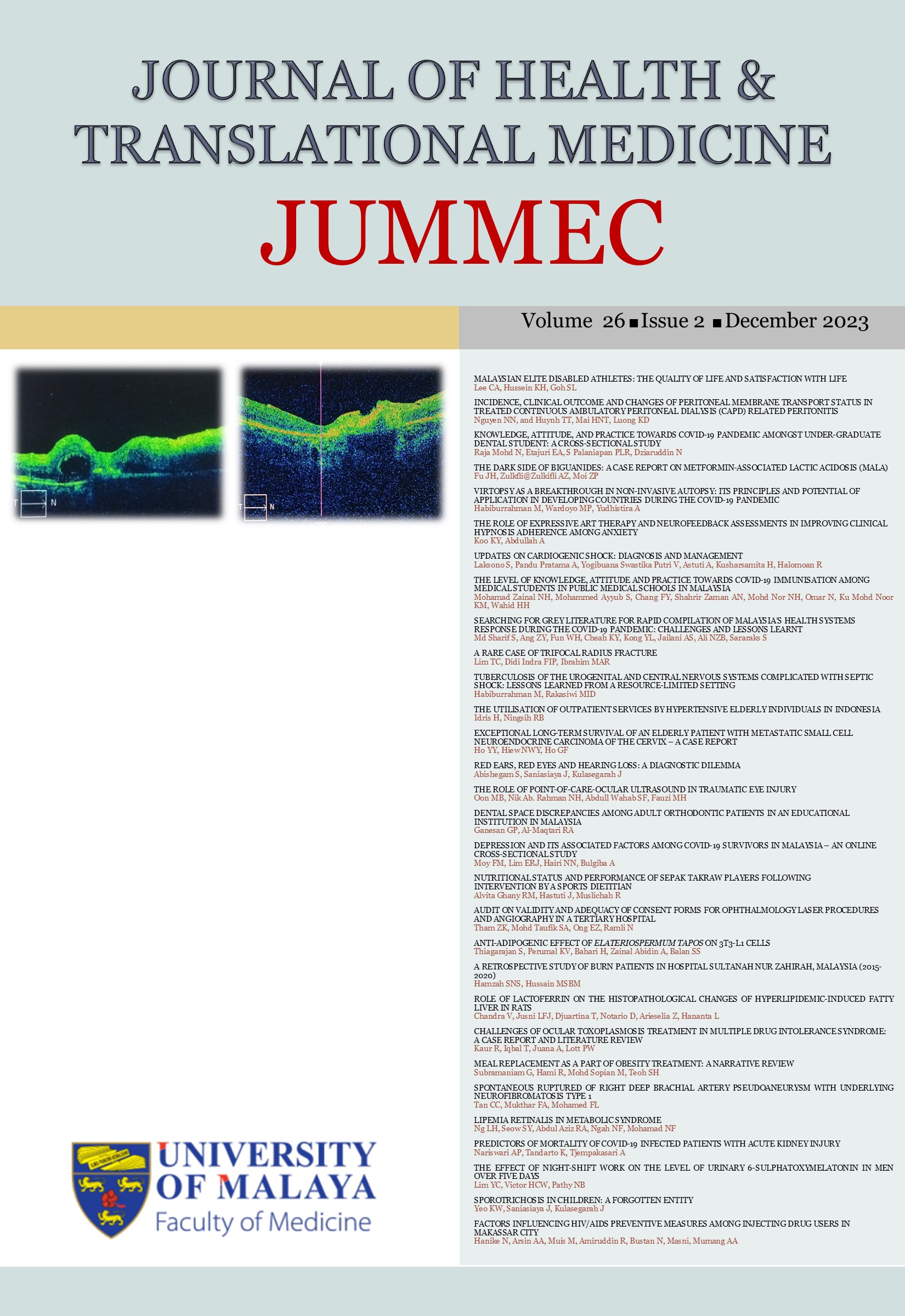DENTAL SPACE DISCREPANCIES AMONG ADULT ORTHODONTIC PATIENTS IN AN EDUCATIONAL INSTITUTION IN MALAYSIA
Received 2022-10-11; Accepted 2023-05-17; Published 2023-07-21
DOI:
https://doi.org/10.22452/jummec.vol26no2.16Abstract
Malocclusion is an abnormal occlusion with regard to the position of the teeth and shows varied prevalence in different parts of the world. Crowding and spacing of teeth are two common features of malocclusion and are described as a lack or excess of space between the teeth. This study was conducted to evaluate the prevalence of crowding and spacing of teeth and their severity among Malaysian adults aged 18–25 visiting our institution, as well as their association with gender. A total of 150 adult patients were evaluated for crowding and spacing using the Boley caliper intra-orally. The severity of crowding and spacing was also noted. The study included Malay (70%), Chinese (25%), and Indian (5%) participants. Descriptive statistics were done and it was observed that crowding was more common in the mandibular arch (80%), whereas spacing was a common malocclusion found in the maxilla (14%). Based on the severity of crowding, it was observed that mild crowding (1-3 mm) was most frequent in both the maxilla (45%) and mandible (53%). However, in terms of spacing, moderate spacing (4-6 mm) (5.3%) was common in the maxilla; whereas in the mandible, mild spacing (1-3 mm) (9.3%). The Chi square analysis did not reveal any significant association between crowding and spacing with gender. Based on these results, it can be concluded that crowding is a common malocclusion affecting the mandibular arch, whereas spacing is common in the maxilla in the young Malaysian population visiting our institution. Both of these malocclusions were of the milder type and did not show any association with gender in our study population Studies conducted on a larger population are required to determine the association of these traits between genders and races in our population.
Downloads
Downloads
Published
Issue
Section
License
All authors agree that the article, if editorially accepted for publication, shall be licensed under the Creative Commons Attribution License 4.0 to allow others to freely access, copy and use research provided the author is correctly attributed, unless otherwise stated. All articles are available online without charge or other barriers to access. However, anyone wishing to reproduce large quantities of an article (250+) should inform the publisher. Any opinion expressed in the articles are those of the authors and do not reflect that of the University of Malaya, 50603 Kuala Lumpur, Malaysia.


